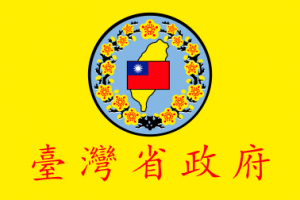Language/Min-nan-chinese/Vocabulary/Fruits
Hi Min Nan Chinese learners! 😊
In this lesson, we will focus on fruits, an essential part of any diet. Knowing the different types of fruits can help you expand your vocabulary and communicate more effectively with native speakers. So, let's get started! Don't forget to check out the find native speakers and ask them any questions you may have.
Vocabulary[edit | edit source]
Learn the Min Nan Chinese words for the following fruits:
| Min Nan Chinese | Pronunciation | English |
|---|---|---|
| 水果 | suí guǒ | fruit |
| 苹果 | píng guǒ | apple |
| 橙子 | chéng zǐ | orange |
| 葡萄 | pú táo | grape |
| 榴莲 | liú lián | durian |
| 木瓜 | mù guā | papaya |
| 香蕉 | xiāng jiāo | banana |
| 草莓 | cǎo méi | strawberry |
| 芒果 | máng guǒ | mango |
| 木耳 | mù ěr | mushroom |
Interesting Facts[edit | edit source]
Fruits are not only delicious but come with fascinating facts. Here are a few interesting ones that you might find intriguing:
- Durian, known as the "king of fruits," is widely popular in Southeast Asia. It has a spiky exterior and a strong odor often described as a mix of gym socks and onions. Love it or hate it, there is no denying its unique taste.
- The world's largest apple producer is China, followed by the United States and Turkey.
- Strawberries are the only fruit with seeds on the outside.
- Bananas are technically berries while strawberries, raspberries, and blackberries are not.
- Mangoes are native to South Asia and have been cultivated for over 4,000 years.
Dialogue[edit | edit source]
Here is a dialogue between two friends talking about fruit:
- Person 1: 你喜欢吃什么水果?(Nǐ xǐhuān chī shénme shuǐguǒ?) (“What fruit do you like to eat?”)
- Person 2: 我喜欢吃苹果和橙子。(Wǒ xǐhuān chī píngguǒ hé chéngzi.) (“I like to eat apples and oranges.”)
Cultural Significance of Fruits[edit | edit source]
Fruits have held cultural significance in many civilizations. Here are a few examples:
- In Chinese culture, the Mandarin orange is a symbol of good fortune and is often given as gifts during the Lunar New Year.
- Apple trees have significance in Greek mythology as they were believed to have been a symbol of immortality and fertility.
- The pomegranate is an important symbol in Jewish culture as it represents righteousness, fertility, and knowledge.
Practice Exercise[edit | edit source]
Match the fruit names in Min Nan Chinese with their English translations.
| Min Nan Chinese | English |
|---|---|
| 苹果 | A. Papaya |
| 草莓 | B. Grape |
| 葡萄 | C. Orange |
| 橙子 | D. Strawberry |
| 木瓜 | E. Banana |
Answers: 苹果 - A, 草莓 - D, 葡萄 - B, 橙子 - C, 木瓜 - E
Great job! You have expanded your Min Nan Chinese vocabulary and learned quite a few fascinating things about fruits.
Sources[edit | edit source]
➡ If you have any questions, please ask them in the comments section below.
➡ Feel free to edit this wiki page if you think it can be improved. 😎

